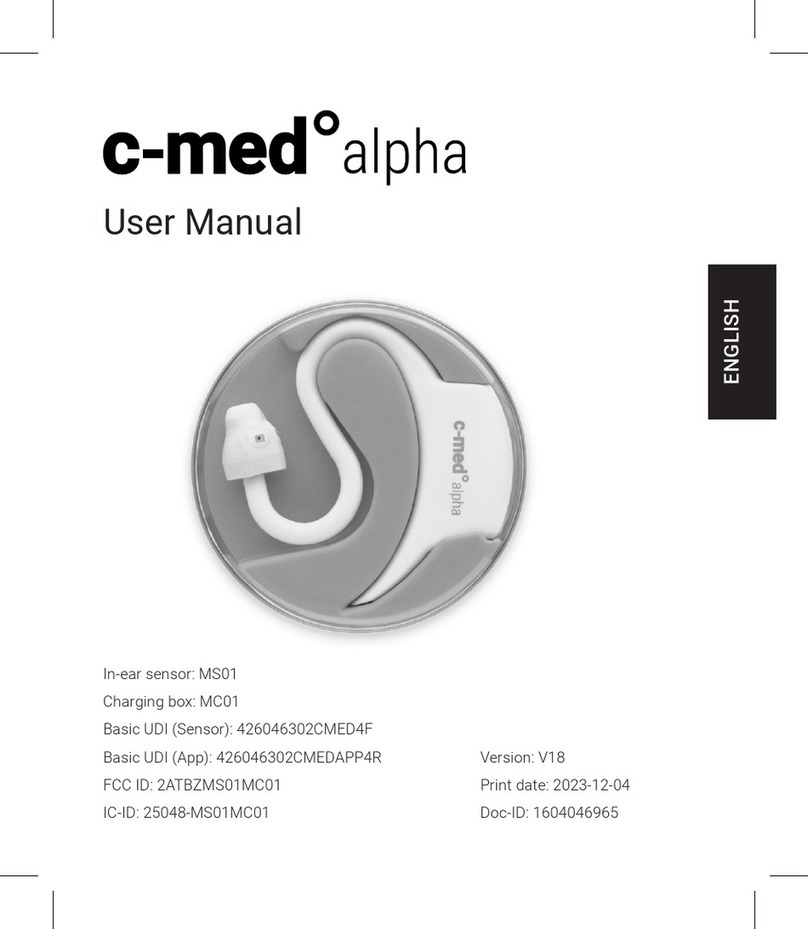● Under certain circumstances, it is possible that the in-ear sensor may erroneously
consider a movement as good pulse quality interpreted. Therefore keep movement
during the measurement to a minimum.
Usage / application
● Only use the c-med° alpha in the ear.
● The measurement at rest provides the best results. Avoid unnecessary movements,
chewing and talking during the measurement as they can influence the quality of the
ppg signal and lead to inaccurate readings of SpO2 and heart rate.
● Neither the in-ear sensor nor the smartphone App stores data. All displayed vital
signs data expire automatically after 30 seconds maximum.
● A continuous wearing time of the c-med° alpha of maximum 12 hours and at least 5
minutes per application is recommended.
● If you do not store the sensor at room temperature, allow the sensor to warm up or
cool down for one hour at room temperature (approx. 20 °C) before using the sensor
again.
● Do not use a damaged in-ear sensor. If the c-med° alpha is damaged in any way,
discontinue use immediately and contact the customer service (See chapter:
Customer service).
● The c-med° alpha is an electronic precision instrument. Do not try to repair the in-ear
sensor yourself. Do not try to open the housing or repair electronic components.
Opening the housing may damage the in-ear sensor whereby the liability for material
defects becomes void. Repairs may only be carried out by trained cosinuss°
personnel.
● Don’t make any modifications to the in-ear sensor or any other parts of the scope of
delivery, as these will affect the performance of the c-med° alpha. Changes or
modifications not expressly approved by the party responsible for compliance could
void the user’s authority to operate the equipment.
● This product can be operated at an ambient temperature range of 15 – 40 °C (59 –
104 °F). Do not expose this product to extreme temperatures (below -25 °C / -13 °F
or above 70 °C / 158 °F) or excessive humidity (≥ 90% relative humidity,
non-condensing).
● At ambient temperatures of 40 °C, self-heating of 1 – 2 °C can increase the in-ear
sensor temperature to max. 42 °C.
● When this instrument is operated under the minimum amplitude of 0.2 or above the
maximum amplitude of 1.0 for the Perfusion-index the SpO2results are possibly
inaccurate.
● When this instrument is operated under the minimum amplitude of 30 for the
Quality-index the Heart rate results are possibly inaccurate.
● The c-med° alpha is swallow-proof and contains NO small parts that can be
swallowed or pose a suffocation risk to children.
● Do not operate the in-ear sensor while charging or cleaning.
● Avoid excessive pressure on the in-ear sensor, as the skin under it could be
damaged.
● Applying the in-ear sensor to the left or right ear can affect the signal quality.
● Do not use the in-ear sensor directly after showering, bathing or swimming as long as
there is still water inside the ear canal.




























